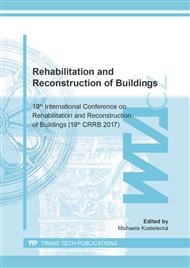p.76
p.81
p.86
p.92
p.98
p.104
p.121
p.127
p.133
Utilization of Fly Ash Contaminated by SNCR Flue Gas Denitrification into Polymer Epoxy Anchor
Abstract:
The paper deals with the possibility of using two different types of fly ash contaminated by flue gas denitrification (Selective Non-Catalytic Reduction (SNCR)) as a filler into the polymer anchor based on epoxy resin. Due to the problematic use of contaminated fly ash in silicate materials, the use of such fly ash in polymer materials seems to be effective because by mixing with polymers such as polyester and epoxy resins, toxic gas ammonia (NH3) does not release. Determination of optimal percentage of filling by the fly ash was performed in order to achieve the best possible physical and mechanical properties of the epoxy anchor material. It was found out that the 45% addition of both used of contaminated fly ashes seems to be the most appropriate, when the polymer anchor material exhibited better tensile properties than reference anchors containing quartz sand Dorsilit. Furthermore, it was found that the optimal addition of contaminated fly ash also positively influenced the maximum anchoring force found in the tug test. Detailed connection of anchor material with anchored bar and concrete was observed on tomography images.
Info:
Periodical:
Pages:
98-103
Citation:
Online since:
August 2018
Authors:
Keywords:
Price:
Сopyright:
© 2018 Trans Tech Publications Ltd. All Rights Reserved
Share:
Citation:


